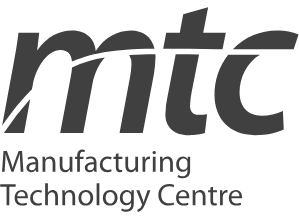Avoiding the beat of a lonely drum
Our recent conversation with the Manufacturing Technology Centre (MTC) got us thinking about sustainable systems.
As part of the special podcast series produced by The Green Edge for the Enginuity Future Skills Hub, we were privileged recently to talk to Mike Wilson, Chief Automation Officer at the Manufacturing Technology Centre (MTC). The episode featuring Mike is now released, along with an accompanying post from us, also commissioned by the Hub.
Alongside the topics we cover in the podcast – which include the work of the MTC and the support it offers to small and medium-sized enterprises (SMEs) looking for automation solutions – we also swung the incense over a few other important points during our chat with Mike. We talked about the need for SMEs to take more than just a short-term view of any investment in automation: savings in terms of short-term reduction in labour costs are often dwarfed by factors like increased throughput of existing machines or, in the longer term, postponing the need to buy future equipment. We also talked about the wider slate of potential benefits from automating a machine or a process: in product quality and consistency; in reduced warranty costs; and in automating demanding, dirty jobs that no-one wants anyway and labour turnover is high, with all the cost that entails. And the need to be able to sell those benefits in terms of a business case that a bank or other funder might understand.
One point that got us thinking was when Mike described the road that MTC guides SMEs along when they start to look at which parts of their operations to automate. Many companies might look at automating the most difficult part of their operation; but the real benefit may come elsewhere, perhaps even in the simpler parts. He told us that when MTC starts to work with a new client, they start with a line walk of the factory, to identify whether automation is appropriate. For some businesses, automation will be worth doing from the off, but other businesses may need to do other things first. Reducing work in progress (WIP), for example, or perhaps reorganising the factory around lean thinking.
As Mike talked, we were reminded of a rather quirky book published back in the eighties. Called The Goal and written by Eliyahu (Eli) Goldratt, it’s still available today from reputable booksellers (and also Amazon). Eli himself died a few years ago, but his legacy to the world was the so-called Theory of Constraints (TOC). The Goal was written as a rather tacky novel (that’s just our opinion – the official description is ‘a fast-paced thriller’) but it embeds the story of how TOC is used to save the factory of the hero, Alex, as well as Alex’s marriage, under the guidance of a somewhat mysterious old friend called Jonah (who was, of course, Eli in print).
At the time, The Goal was mandatory reading for anyone coming into the relatively new field of software app-enabled factory and supply chain planning and optimisation, which spawned brief high-flyer software firms like i2 Technologies and Manugistics (both long-since gobbled up into larger software collector vendors) and the behemoth that was (and possibly still is) SAP APO1.
Central to TOC is the concept of drum-buffer-rope. When applied to a factory or any other kind of production operation, the drum is the part which determines the beat: it is the constrained part, the pinch point, the bottleneck. Think of it like passport control when the e-gates aren’t working.
The buffer is the stock of stuff built up directly in front of the drum, to protect it from running dry – because if the drum runs dry, overall throughput goes down. The buffer may be raw material if the drum is ‘upstream’, or part-finished components if it’s further down the line. Whatever, the rest of the operation – the rope – pulls everything else through so that the drum beats out the rhythm and the buffer stays at the kind of level Goldilocks would be happy with.
Our opinion – rightly or wrongly – is that TOC always suffered a little from some of the egos involved, although there are those who are keen to point out that it still has a role to play within the much wider scope of lean manufacturing. The reason we’re bringing it up here, though, is that it occurred to us that drum-buffer-rope is a useful metaphor for thinking about sustainable systems. If we think of sustainability as setting the pace – the drum – for economic activities, ensuring they are conducted within the limits of environmental and social capacities, then the question becomes one of how much resource and waste – the buffers – can be used or generated without causing harm.
Where could we apply this thinking? The food supply chain for one: so far it seems no one has sat down to figure out where the drum really is, with the result that there are buffers of WIP all over the place. And food WIP often turns quickly to food waste2.
Our recent considerations of the English education system is another. Lots of buffers there, seemingly, with drop-outs and people failing to make the transition to the next step at every transfer point in the system; and with graduates trained in one thing or another while the sustainability drum – calling for key workers to fit the solar, build the wind farms, and retrofit the houses – is in danger of tapping out a somewhat lonely tattoo.
So, pay attention to the drums and buffers. And the rope? Well, if we get the first two things right, then that leaves less chance of being in danger of hanging ourselves, doesn’t it.
Incidentally, we read that APO is sunsetting, strangely enough from companies whose founders were leaders in the field from which APO emerged in the first place.
…although we’ve written recently about excellent place-based ventures like the Felix Project making sure some of those buffers get redistributed.







